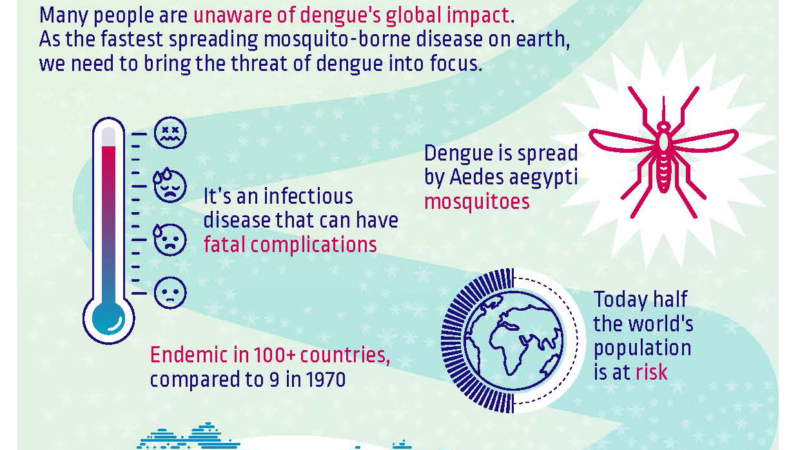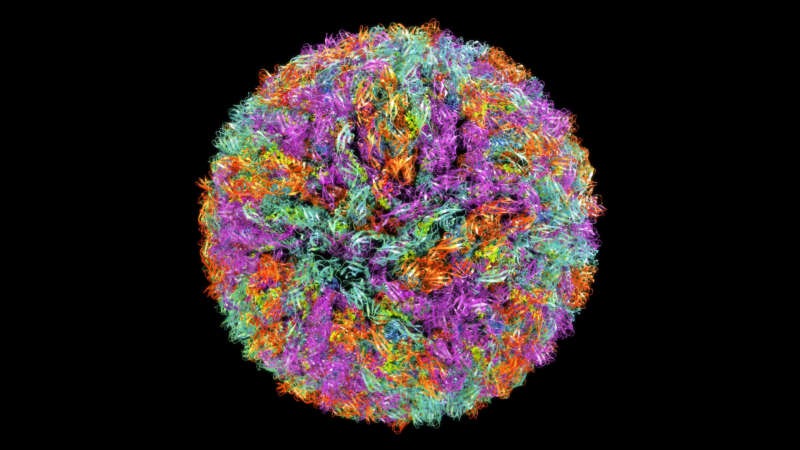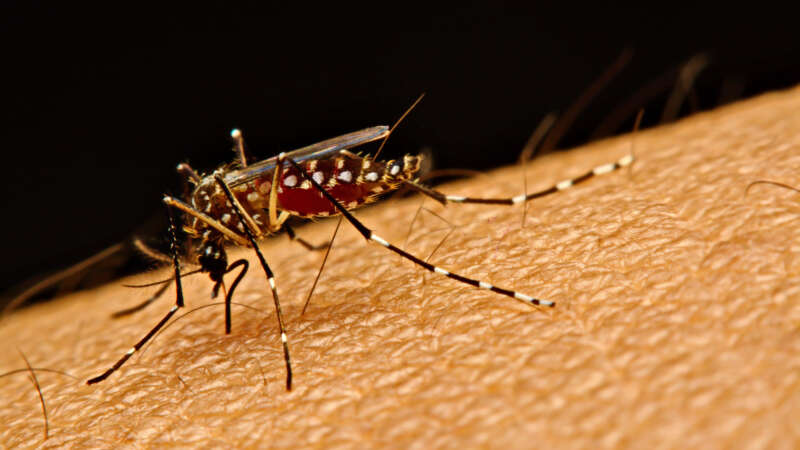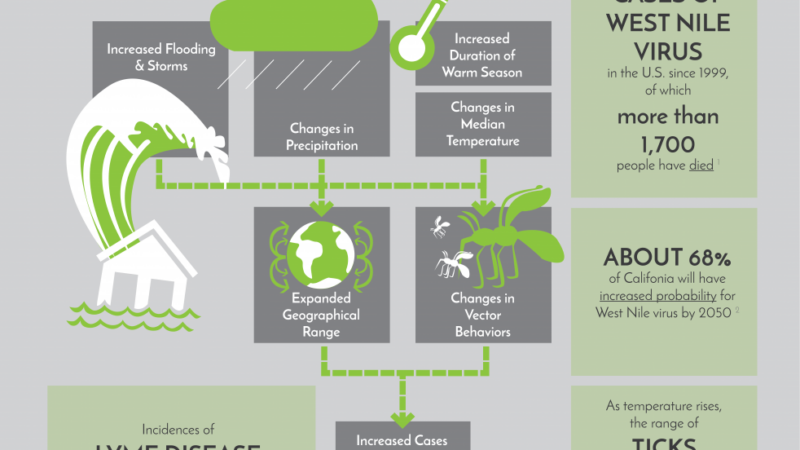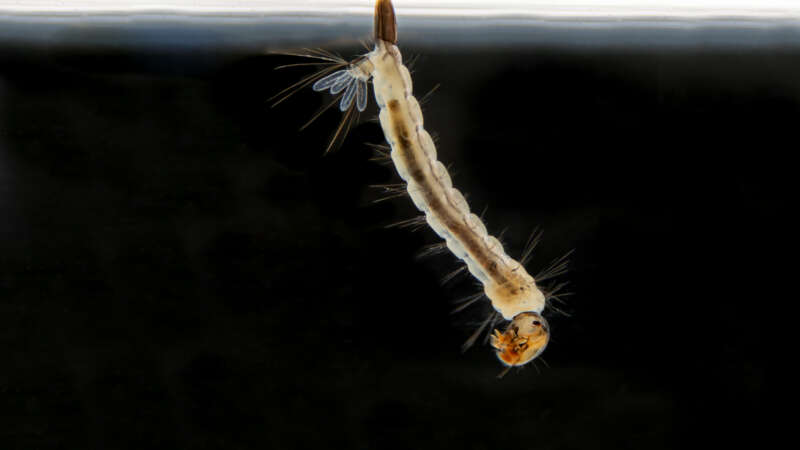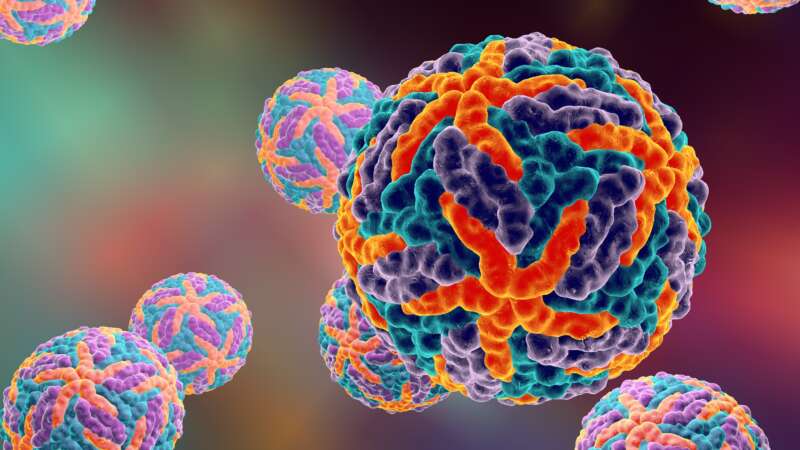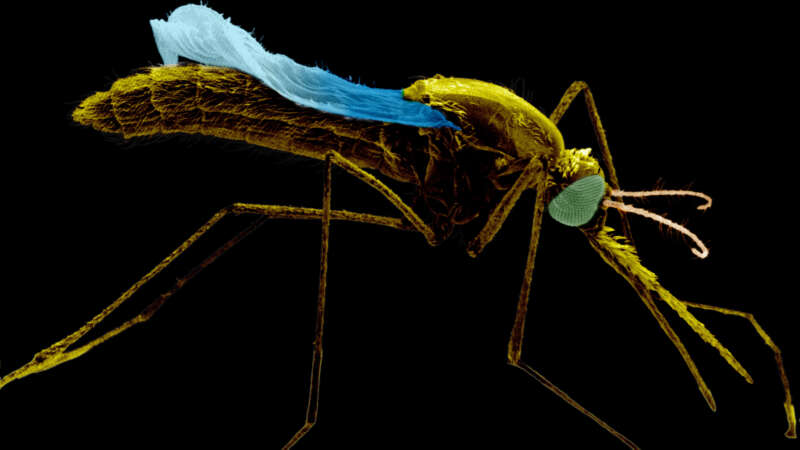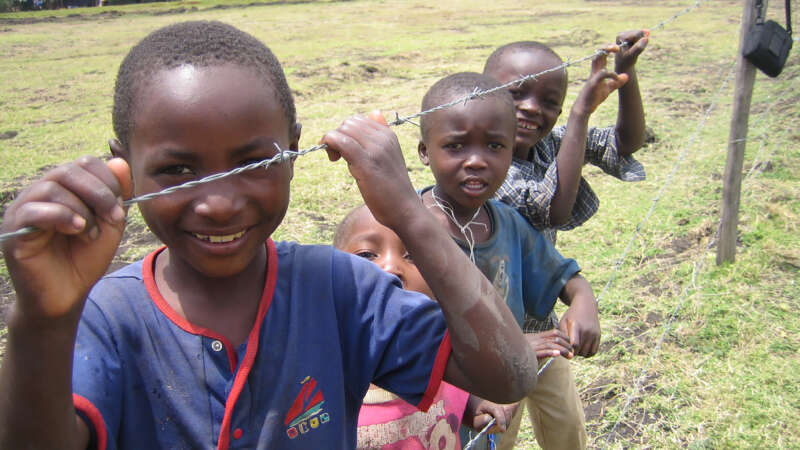mosquito control
Mosquito-borne Diseases & the Environment
Climate change and human activity are enabling the spread of mosquito-borne diseases, like dengue fever, to new places. Stanford infectious disease experts and disease ecologists discuss what we know and how communities can protect themselves from these changing disease threats.
Aedes aegypti: Beyond the Black and White
One look at Aedes aegypti gives an immediate impression of its menacing nature. The telltale dark and white bands on the mosquito’s legs and other body parts bring a sense of foreboding and hardship. Sleek, silent, and stealthy, Ae. aegypti is the primary vector for several important, debilitating, and sometimes fatal human diseases including dengue, Zika virus, yellow fever, and chikungunya. The species is cause for mounting concern on many levels, as its biology, behavior, and ability to adapt have made Aedes aegypti one of the most pervasive and daunting public health challenges in the modern world.
The first mosquito ever associated with the spread of disease, Ae. aegypti is also the most studied of all mosquito species.1 From its humble beginnings in the African wild to a footprint that spans the globe, this durable and opportunistic insect has become a formidable opponent of vector control efforts worldwide.
Vector-borne Diseases & Climate Change
Climate change creates new risks, particularly in the United States, for human exposure to vector-borne diseases (VBDs) — diseases which are transmitted to humans through the bites of insects (referred to as vectors) that carry the disease-causing pathogens. Common vectors include mosquitoes, ticks, and flies.
Climate change creates new uncertainties about the spread of VBDs such as the Zika virus, dengue fever, malaria, and Lyme disease by altering conditions that affect the development and dynamics of the disease vectors and the pathogens they carry.
Tracking the Global Burden of Vector-Borne Disease
The burden of vector-borne diseases (VBDs) is one of public health’s most pressing challenges. VBDs are caused by pathogens such as arboviruses (arthropod-borne virus), bacteria, and parasites that are transmitted to humans and animals through the bites of infected arthropods including mosquitoes, ticks, sandflies, and fleas, among others. According to the World Health Organization (WHO) , “vector-borne diseases account for more than 17% of all infectious diseases, causing more than 700,000 deaths annually worldwide”.
Beyond these broad statistics, attempts to quantify the global burden of VBDs is extremely challenging – for a number of reasons. At the highest level, even “burden” has an underlying complexity in public health terms: burden may refer to the number of cases of a given disease as well as the number of deaths.
Burden can also represent Disability-adjusted Life Years (DALYs), a measure that accounts for the long-term effects of disability among the afflicted, as well as the economic impact of disease from regions and countries all the way down to households and individuals. These economic impacts can be further scrutinized as reduced productivity among the populace, increased healthcare costs, and negative impacts on tourism; all of which can directly affect the GDP and economic growth of local and regional economies. And that’s just the beginning.
Study: Digitally Managed Larviciding
A new study has found that larval source management (LSM) – treating mosquito breeding habitats – can still be effective in malaria elimination operations, especially with the aid of new digital technologies. LSM has been replaced in Africa by long-lasting insecticidal nets (LLINs) and indoor residual spraying (IRS), but these methods are becoming less effective due to mosquitoes’ growing resistance to insecticides.
Resistance in the Limelight
Doctor Shinji Kasai’s recent publication on the combined effects of three knockdown resistance (kdr) mutations in Aedes aegypti sparked media frenzy. He demonstrated the causal relationship between specific genes & pyrethroid sensitivity in mosquitoes.
The study improved understanding of insecticide resistance evolution & opened new strategies to control mosquito populations & reduce disease spread. Kasai’s latest paper on super-insecticide-resistant dengue mosquitoes caused a stir in the media, revealing high levels of pyrethroid resistance in field populations.
Urban Africa Faces Invasive Challenge
Malaria numbers are surging in the Horn of Africa, but not in rural settings.
Djibouti is a small country of around 900,000 inhabitants on the Horn of Africa that rests on the shores of Bab al-Mandab strait, just 20 miles from the coast of Yemen and southwest Asia. Ten years ago, the World Health Organization (WHO) proudly proclaimed that Djibouti was entering the “pre-elimination phase” in its longstanding battle against malaria. Pre-elimination status is reached when a country’s number of confirmed malaria cases approaches zero.
Malaria’s Long Tail
The impacts of severe malaria cases on children are well documented, but the effects of mild infections on child development are less understood. The statistics …
The Economics of Resistance
It would be extremely difficult to calculate, with any high degree of accuracy, the global economic impact of insecticide resistance. For starters, we must consider that insect management plays a pivotal role in a variety of sectors – agriculture, home and garden, forestry, structural applications, and vector control. Analysis of the totality of economic impacts arising from resistance in any one of these sectors quickly becomes a complicated interplay of variables that interact within that given system.
